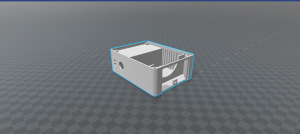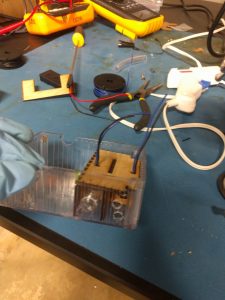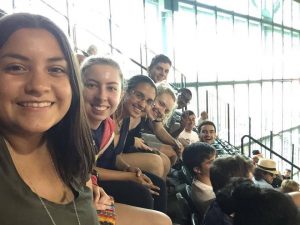This week was kind of a blur. Staying after-hours every day, I spent the most amount of time at the OEDK than I think I have ever spent before.
Starting on Sunday, our team had a faculty advisor meeting followed back to back with a client meeting. Although we got mixed recommendations on what to do, we learned more about our goals and established a clearer vision of how to end our project. Mr Welsch was very helpful in his Electronics experience and in advising us with many great ideas.
The Oxycal Team migrated to the conference room on Monday afternoon to discuss how to best achieve our goals for the week. We came up with 4 main sectors of work that had to be done:
- Modifying the circuit of our device – we wanted to incorporate an element that alerted you to replace the sensor batteries when they were no longer good.
- Redesigning the casing of the device – Mr Welsch gave us the idea to add compartments that would:
- Maximise airflow to the sensor batteries,
- make the sensor battery board replaceable
- Protect the circuit from the elements
- Testing the device – conducting comprehensive tests of the device to prove its reliability and usability. The original goal of our team for the summer.
- Designing a battery holder that:
- Gives reliable readings
- Is easy and cheap to assemble/manufacture
- Gives optimum and consistent airflow to the sensor batteries.
We worked on these things throughout the week, with lots of difficulties. We attempted to modify the existing prototype box in Solidworks, and 3D print it. Since it was our first time using Solidworks, it took us a long time to work towards this, considering the fact that the imported sketch of the case we worked with was the incorrect format.
After a day of building the first prototype case, we decided to also look at the costs of 3D printing these in bulk – near the quantity of 100. The estimates we got from various manufacturers ranged upwards of $15 per box. This was out of our budget, and if we wanted to do this right, we had to come up with another method of building a case.
Next came laser-cutting. We decided to laser cut compartments (from wood – very cheap) that would fit into our case nicely. We spent the next 3 days tirelessly iterating the laser-cut components to fit into the case. It was a lot of fun work with the lasercutter.
After much tedious work, we finished the casing and battery board assembly to have it ready for testing. We mainly want to test if this setup provides consistent airflow to the sensor battery, meanwhile also not mixing the airflow with the reference battery. If the airflow begins to mix with the reference battery (and we can tell if that voltage begins to increase as well, then this laser-cut compartments idea will not work, and it will become difficult to develop a replaceable battery board.
Although there were some setbacks this week, our team feels motivated to finish this project on the right foot.
We now aim to build 3 consistent clone Oxycal Devices, with a design that we determine works. We will run heavy tests on all 3 of these devices, to check for consistency results between them. If all works well Tiwonge and Charity will take these devices to Malawi.
This week has consisted of exhaustive amounts of work, and I still feel like we’ve done nothing and we have our ways to go. The next couple of days will be the challenge of a lifetime, to work hard and work harder to prove our device works, and begin implementation to Malawi, and other countries to follow.




It seems to me you have accomplished a great deal more than “nothing.”
Harrell and I enjoyed reading about you in a recent Rice magazine. I will bring a copy Wednesday if you don’t have one.